






Australian law determines that most Australian Nannies need to be properly employed. Our services allow parents to set up a fair and legal working arrangement with a professional nanny.
Paying your nanny on a payroll will give you peace of mind to know that you are meeting all your legal requirements as an employer.
Secure a professional Employing your nanny demonstrates that you take their career seriously. Employment security helps your nanny commit to your role long term.
Theme: Children have the right to be healthy, safe and happy.

As workers in Australia, nannies have the right to be paid superannuation. Have peace of mind knowing you’re helping your nanny plan for their future.
We’ll make all PAYG (tax) instalments to the ATO, allowing your nanny to effectively manage their EOFY and meet your legal obligations for Single Touch Payroll.

Properly employing on a payroll ensures you’re meeting your obligations, removing the liability you would face when paying cash in hand.
It’s time to talk fashion and beauty. Spring is in its full throws so it must be time for Spring cleaning, especially with the weather warming up. I had a BIG wardrobe cull on the weekend. I’m a big advocate for sustainable fashion (see page 14) and love a bit of op shopping, but getting secondhand bargains often means I buy things I probably shouldn’t have, but did as they were cheap!
So many of moy clothes don’t fit either so I’ve officially started a new health kick. These Covid kilos are just not going to move themselves and Summer is coming. So I’m back on 28 by Sam Wood with their latest 8 week challenge. I’ll try and keep you updated over on my Insta!
So anyway, once I had my wardrobe sorted, it was onto my bathroom cupboard. It’s hard to chuck beauty products, but that shiz had got a use by date for a reason mama. Check out Liv’s tips on page 34 about how to sort that situation out. Speaking of beauty, I had a fabulous chat with Alex Fevola about life, love, her new book and her gorgeous Runway Room makeup products (turn the page for a read). Her story is both heartbreaking and inspiring.
It’s also a great tie to go through the kid’s wardrobes as last year Summer stuff will no doubt be too small. Make sure you enter our Cotton On Kids Competition to win 1 of 4 $250 vouchers so you can top up their collection for free! Wish I could enter! Shop up a storm mamas.

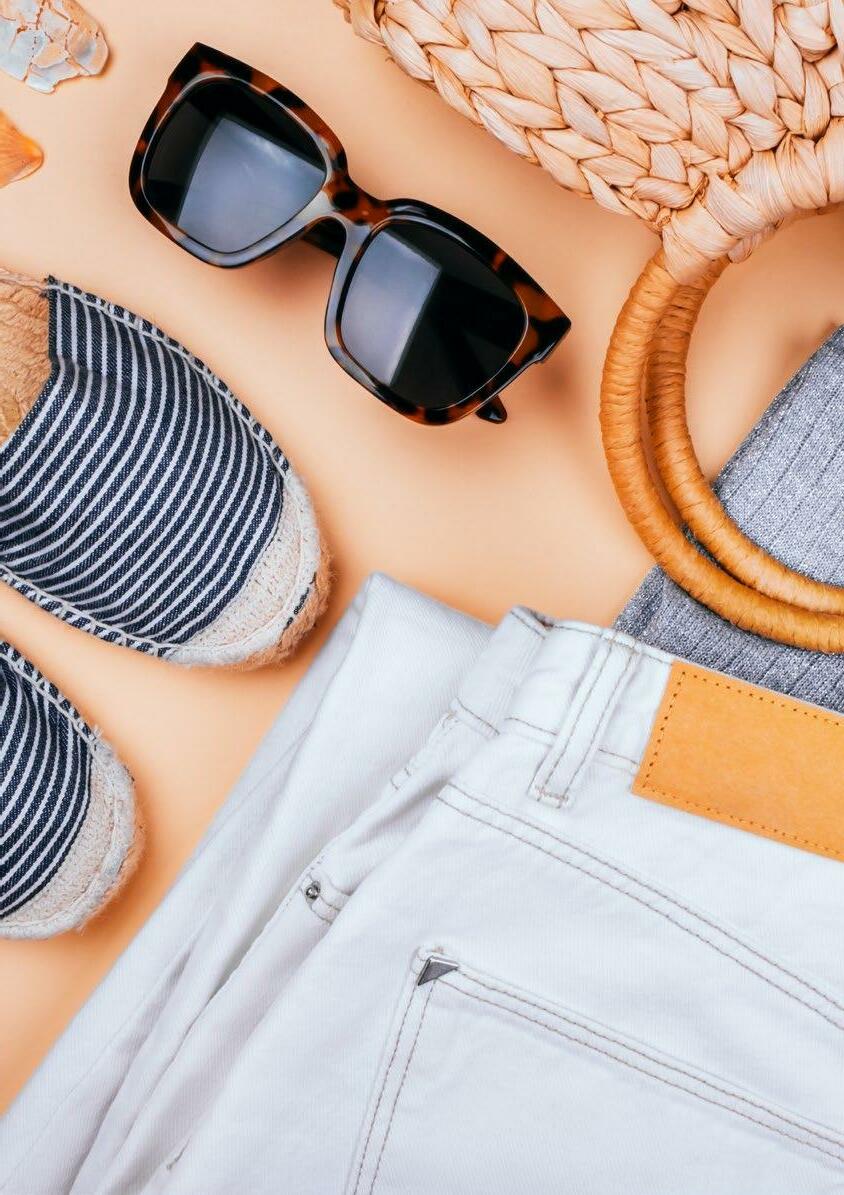 Sarah Cavalier
Editor - MamaMag - @thecavaliermama
Sarah Cavalier
Editor - MamaMag - @thecavaliermama

MamaMag is designed and published free online every two months for Adelaide mums, families and carers.
Support and fun for the everyday mum
Publisher: Mama Creative Group Pty Ltd. ABN: 26 042 138 550. PO Box 8018, North Road LPO, Brighton East VIC 3187 Phone: 1300 771 446 Email: info@mamamag.com.au www.mamamag.com.au | www.mamacreative.com.au

Editor in Chief/Creative Director: Sarah Cavalier: sarah@mamamag.com.au For advertising enquiries contact: Olivia Wilson: olivia@mamamag.com.au
Want to write for us or have an article idea? submissions@mamamag.com.au

Support and fun for the everyday mum
Support and fun for the everyday mum

linings
real story
Taylor Reserve
latest Aussie must-have
fashion
we can tackle
traps
stories from
laid plans
cooking
the joy
to say no
on the shelf
is key
years of play
birthday
clean up
king of
to Spring clean your
motivation intact
4-stage health activation
on

and fun around
getting loud
children with
Slow the ageing process
hacks
Step up for kidney health
till you drop, online or in store
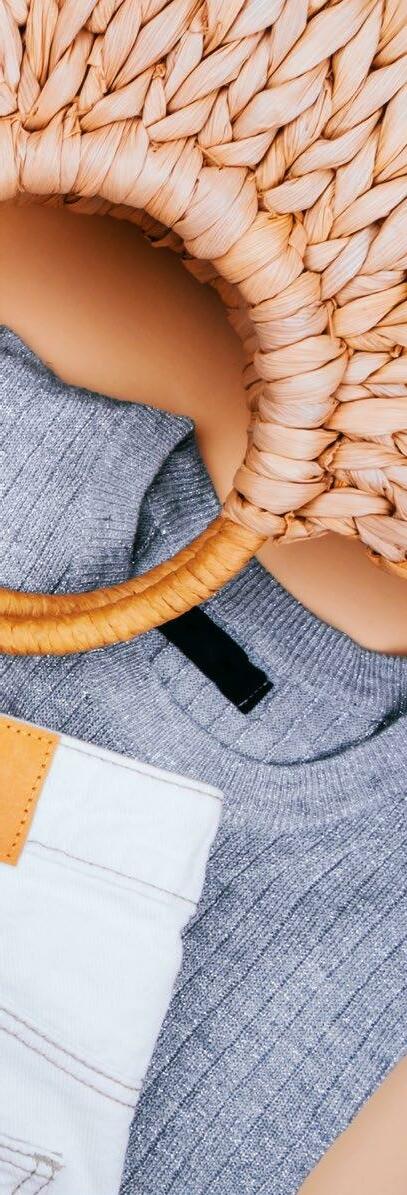
any Cotton On Kids store!
the latest kid’s clothes at Cotton On Kids

kid’s swim, pyjamas, denim, dresses
more. Cotton On Kids caters to mini
teens alike, offering
allow
shine through.
Thankfully, with many things in life, we can find a silver lining. When faced adversity, as hard as it is or as much as we think life can’t get any lower or maybe not even get any better, if we can push though and come out the other side, we can often find the silver lining in the process and we bounce back and flourish.
My own personal silver lining came about with my divorce. Certainly not the way I saw my life panning out, especially after I had just built my forever home in the country, but as my marriage unravelled and I moved back to Melbourne, I discovered there was little local support for mums and so I started MamaMag. Had I remained in my humble country life I would 100% not be where I am today and MamaMag would not have reached millions of mums and families in the process.
However, MamaMag is not how I first came across Alex Fevola, although she did come to advertise her then fabulous hair and makeup salon Runway Room several times with us!


This gorgeous mother of four beautiful daughters first came on my radar when I moved back to Melbourne ten years ago following my marriage breakup. With a background in modelling as a teen, Alex had then moved onto a successful career in photography and as such was hired to shoot my local childcare centres annual class and individual photos.

Editor Sarah Cavalier speaks to Alex Fevola about life, losses and her new book.
I didn’t tell her this in our interview, but I actually asked for a refund on those photos! Not because her work was bad. Not at all. She clearly had talent. The reality was it was a week after I had rocked my then 20-month-old daughter’s life (plus that of her 3yo brother’s) by leaving the home they knew, moving in with my mother (don’t worry, that was only temporary!) and starting at a new childcare centre full time whilst I tried to scramble and resurrect my own career. She looked - and was - miserable, lost and confused, and as much as I’m sure Alex and the staff had all tried, there wasn’t a single smile to be seen. Every single photo broke my heart because she just looked so sad. I knew I could never put one in a frame or share them with family, and being a newly single mum, with barely a penny to my name, I really couldn’t waste money like that!
Of course she wasn’t just some random photographer, I knew exactly who Alex Fevola was. It was hard not to. She was married to one of AFL’s biggest super-stars Brendan Fevola. Brendan played 204 games for Carlton and Brisbane between 1999 and 2010 but was known for not only his on-field greatness, but some reasonably questionable antics off the field as well, often landing him in the media for all the wrong reasons.
For so long the media has controlled Alex Fevola’s narrative. Imagine some of your life’s biggest struggles and more personal details being reported on all the time and having it all beyond your control.
In her new book, ‘Silver Linings - a journey to happiness’, Alex is taking the power back and telling her truth, on her terms, not how the media wish to portray her. This being said, you can’t write an autobiography and only share the good things, and while there are many good things in her life, boy does she unearth some sad and unbelievable stories, so many of which we knew nothing about.
If you thought her relationship with Brendan had its own sets of hardship, from gambling addiction, cheating scandals, drinking and money woes, prior to this she had already been through some of her darkest times.
Long before she met the then relatively unknown Brendan in 2003 at the Stokehouse, she was a young eighteen-year-old, in love and smitten with a boy called Lonny.
Her first real love story was swept with its own tales of adversity, from an early break up, reuniting a year later, intimidating parentin-laws, none of his friends liking her, then a horrific car crash that left Lonny a changed man. Lonny had always been a reckless driver and Alex knew from the instant she received that life changing phone call at 3am, that something bad had happened. Lonny survived, but he was never the same after the accident. She said his demeanour had changed and he’d lost the twinkle in his eyes.
A few months later his life was spiralling out of control. His drinking escalated and cracks in their relationship were growing. But it was at this time that Alex also discovered she was pregnant. She was going to be a parent at age 22. Lonny was excited and they made a pact to work on their relationship but by the end of her pregnancy she knew they had no future.
Mia was born on 14 January 2000, induced 10 days overdue and delivered after a traumatic 18-hour birth. A new millennium baby and a lucky new start? Not even close. The worst was yet to come.
Alex had felt a dark feeling since the 1999 NYE party she went to, 9 months pregnant, when everyone was worrying about the Y2K bug and predicting all kinds of tech problems. But Alex felt a fear closer to home. Those close to her shrugged it off as normal feeling of a new mum, but she felt it was something more sinister. Sadly, she couldn’t have been more right. Four and a half weeks later, Lonny was gone, tragically taking his own life. Little Mia only had four short weeks with her dad. But there was more horror to come. Seven hours later, after receiving the heart-breaking news and as her mum took her to see Lonny’s family, Alex started haemorrhaging. They rushed to hospital where it was discovered she had some retained placenta and would need surgery. Complications meant Alex almost lost her own life that day and just days later she had to attend Lonny’s funeral on a hospital trolley, driven by ambulance still in a critical condition.
The story continues, and let me tell you, it’s incredibly interesting, but I won’t give it all away, you’ll just have to read the book. Alex’s road to recovery, how she coped with the grief of losing the father of her child, her on again off again relationship with Brendan, and of course the beginning and growth of her incredible business Runway Room, first with her makeover bars and later when she relaunched in 2019 with her incredible beauty range.
This is not a book about being Mrs Brendan Fevola, as some people that have interviewed Alex have assumed (since they hadn’t even bothered to read the book prior). Meeting Brendan isn’t even mentioned until page 129!


Mia was three years old on that glorious day at the Stokehouse when she spotted a muscly guy wearing nothing but football shorts with a tshirt dangling out the back (sounds like Fev!). She described him as distinctive, with his tanned skin and dreadlocked hair. But it wasn’t just his looks that captured her attention; it was his energy, the twinkle in his eyes.
“Our eyes locked and I felt my face flush. He turned and watched me walk to the bar. I was so embarrassed and didn’t know where to look. He, on the other hand, had a very good sense of himself and made it quite obvious that he was certainly not shy!”
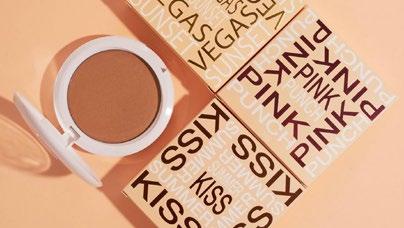

Alex had never heard of Brendan at the time, the man who had first captured Australia’s attention back in 1999 kicking 12 goals in the Millennium NYE match which Alex had ironically been watching at that new years party when she was nine months pregnant. Who could have foreseen that the man kicking the lazy dozen on TV three years prior would one day become the father of her four children. But once the 2004 AFL season began she soon realised how amazingly talented he was and what and excitement he was to watch.
Alex’s book really opens your eyes to the fact that you really do not know who someone is when you read about them in the media. Whilst her early days with Lonny were wrought with tragedy, her relationship with Brendan has been no walk in the park either. But it’s
so lovely to hear her side of the story, not the twisted garbage the media feeds to us for clicks.
One thing’s for sure... Today Brendan and Alex, along with their four girls, are stronger than ever as a family unit. Alex is killing it professionally with her latest makeup range from Runway Room (they are seriously great products that I highly recommend you check out) and with daughter Mia involved in the business too. Brendan is excelling in his new-found post football career in radio and he’s still up to some silly antics, but ones worthy of good media attention, like breaking the Guinness Book of Records for highest altitude catch of an American football Go on, take a look!
So hats off to you Alex, for having the strength to share your story. The good, the bad and the ugly. Alex has covered topics from suicide, loss, coping with grief, being a young single mum, navigating hard relationships, rebuilding love and her journey to happiness. She wrote this book in the hope to help others and to show that in amongst adversity, you can always find your own silver lining.

The largest playspace in Adelaide’s south opened earlier this year costing a grand $2.2m, so it must be amazing! It has been designed for people of all ages and abilities to explore, roam and enjoy the reserves gorgeous natural environment. There is a fully fenced junior play area with farm-themed play equipment including a large wooden tractor, sheep rockers, slides, and a cute farm shop with a wooden bridge and climbing nets. Next door is an older kids play area featuring birds nest like structures, climbing nets, large spiral


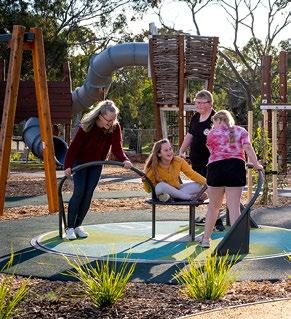
slide and a double flying fox. The all abilities carousel shown below was donated by Rotary Club of Morphett Vale.
Nature lovers can follow the walking trail along the upper reaches of Christie Creek and on the second and fourth Sunday of the month there are train rides for a minimal charge. Dogs are welcome in the park on lead, or off lead in the dog obstacle course and grassed ovals, netball Courts, three BMX circuits, sheltered barbecue areas finish off the great offering here.


We are Feel Good Inc. Face the Day Bundle RRP $69.95
Face the day, morning and night, with Good Morning SPF 50 and Good Night Skin Restoring Cream duo in a new luxe, neoprene travel bag.
Each of the products, Gel Cleanser, Essence and Essential Crème, have been formulated with the power of Vitis Vinifera (Grape) Fruit Stem Cells.
Beautiful Aussie beauty products the MamaMag team have been lovin’ lately!


RRP $59.95 each
Runway Room’s mineral makeup is as much skincare as it is makeup. Their cruelty-free and naturallyderived blends have been delicately formulated to give your skin that lasting smooth tone and radiating glow, without ever compromising on seamless coverage. These handy little beauty sticks include Bronze, Peach Punch Blush, Ice Cream Highlighter and Foundation.

A luxe face and body moisturiser, made with native Australian Kakadu Plum extract & Niacinamide (Vitamin B3). More lotion than milk, but it sure is luxurious just the same!
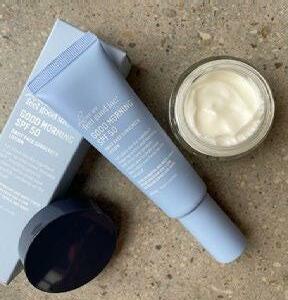


RRP $39.95
Smooth the morning routine, especially the kid’s, with these awesome boar bristles that glide through your hair.
The ultimate pregnancy Belly Duo to help maintain the condition of your skin as it stretches throughout pregnancy; Belly Butter and Belly Oil. Not pregnant? No probs... it dramatically boosts skin elasticity, hydration and suppleness, promotes healthy collagen production, barrier protection and helps reduce the appearance of stretch marks. So perfect for every mama really!


Serum RRP $99 and Expert Restore Niacinamide Replenishing Cream RRP $89
Aussie brand Skinstitut is taking the world by storm with their clinically proven anti-ageing range. Created in collaboration with dermatologists, these products are dedicated to futureproofing your skin and we just love the texture and smell of them.
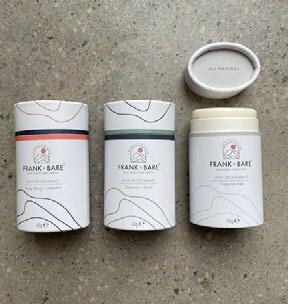

While the effects of UV rays’ acceleration of premature ageing and damage to the natural skin barrier are well known, often forgotten is the damage caused with increased exposure to screens, smart phones, and technology. 100% vegan, Aussiemade and affordable, this mineral powder has natural anti blue light ingredients to keep skin safe from the stresses of short-wave blue light emitted from screens.
Balm RRP $40
Easy Tiger, it’s time to tame the mane! If you’re like mama and your hair is getting courser with a few greys, this light balm really adds softness and shine, reduces frizz, helps detangle and really helps your hair look its best after styling. Mama loves Evo products and this one is a stand out, especially when combined with their Icon Welder heat protectant spray before you dry.
Everyone loves a little bit of shine and sparkle! These multi-use glowgiving highlighter serums, for face and body, are super soft, translucent, and build-able with their lovely mineral pigments. Chose from white gold, rose gold and bronzer to suit your style. You can even swap out the dropper for a pump head if you prefer for application.
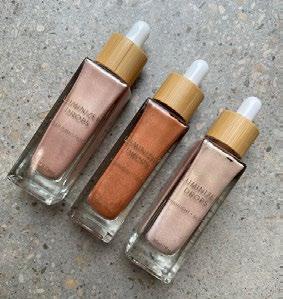
Most natural deodorants are designed using baking soda and/or clays to absorb odour and sweat, whereas Frank + Bare zero in on the sweat munching bacteria that causes the odour in the first place leaving your underarms chemical free and stink free! There are some great fragrances or pick no smell at all and let your perfume do the talking instead.
Face Wash RRP $39.95
and Body Oil RRP $79.95
The super food qualities of avocado make it a superior skin food which his why we love Tropicology products. Derived from the pulp of the fruit, avocado oil contains carotene, protein, lecithin and fatty acids. It’s also high in vitamins A, D and E, which help to moisturise the skin and protect it from damaging UV rays. Sounds good to us!

If things don’t change fast, the fashion industry could use a quarter of the world’s remaining global carbon budget to keep warming under 2˚C by 2050, and use 35% more land to produce fibres by 2030.
While this seems incredible, it’s not. Over the past 15 years, clothing production has doubled while the length of time we actually wear these clothes has fallen by nearly 40%. In the EU, falling prices have seen people buying more clothing than ever before while spending less money in the process.
This is not sustainable. Something has to give. In our recent report, we propose the idea of a wellbeing wardrobe, a new way forward for fashion in which we favour human and environmental wellbeing over ever-growing consumption of throwaway fast-fashion. What would that look like? It would mean each of us cutting how many new clothes we buy by as much as 75%, buying clothes designed to last, and recycling clothes at the end of their lifetime.
To make our wardrobes sustainable, we must cut how many new clothes we buy by 75%
For the sector, it would mean tackling low incomes for the people who make the clothes, as well as support measures for workers who could lose jobs during a transition to a more sustainable industry.
Sustainability efforts by industry are simply not enough
Fashion is accelerating. Fast fashion is being replaced by ultra-fast fashion, releasing unprecedented volumes of new clothes into the market.
In the first 3.5 months of this year, fast fashion giants H&M and Zara have launched around 11,000 new styles combined.
Over the same time, ultra-fast fashion brand Shein has released a staggering 314,877 styles. Shein is currently the most popular shopping app in Australia. As you’d expect, this acceleration is producing a tremendous amount of waste.

In response, the fashion industry has devised a raft of plans to tackle the issue. The problem is many sustainability initiatives still place economic opportunity and growth before environmental concerns.
Efforts such as switching to more sustainable fibres and textiles and offering ethicallyconscious options are commendable. Unfortunately, they do very little to actually confront the sector’s rapidly increasing consumption of resources and waste generation.
On top of this, labour rights abuses of workers in the supply chain are rife.
Over the past five years, the industry’s issues of child labour, discrimination and forced labour have worsened globally. Major garment manufacturing countries including Myanmar, Cambodia, Bangladesh and Vietnam are considered an “extreme risk” for modern slavery.
Here’s what we can do to tackle the situation.
We need to have serious conversations between industry, consumers and governments about limiting resource use in the fashion industry. As a society, we need to talk about how much clothing is enough to live well.
On an individual level, it means buying fewer new clothes, as well as reconsidering where we get our clothes from. Buying secondhand clothes or using rental services are ways of changing your wardrobe with lower impact.
The growing slow fashion movement focuses on the quality of garments over quantity, and favours classic styles over fleeting trends.
We must give renewed attention to repairing and caring for clothes we already own to extend their lifespan, such as by reviving sewing, mending and other long-lost skills.
The wellbeing wardrobe would mean shifting away from existing fashion business models and embracing new systems of exchange, such as collaborative consumption models, co-operatives, not-for-profit social enterprises and B-corps.
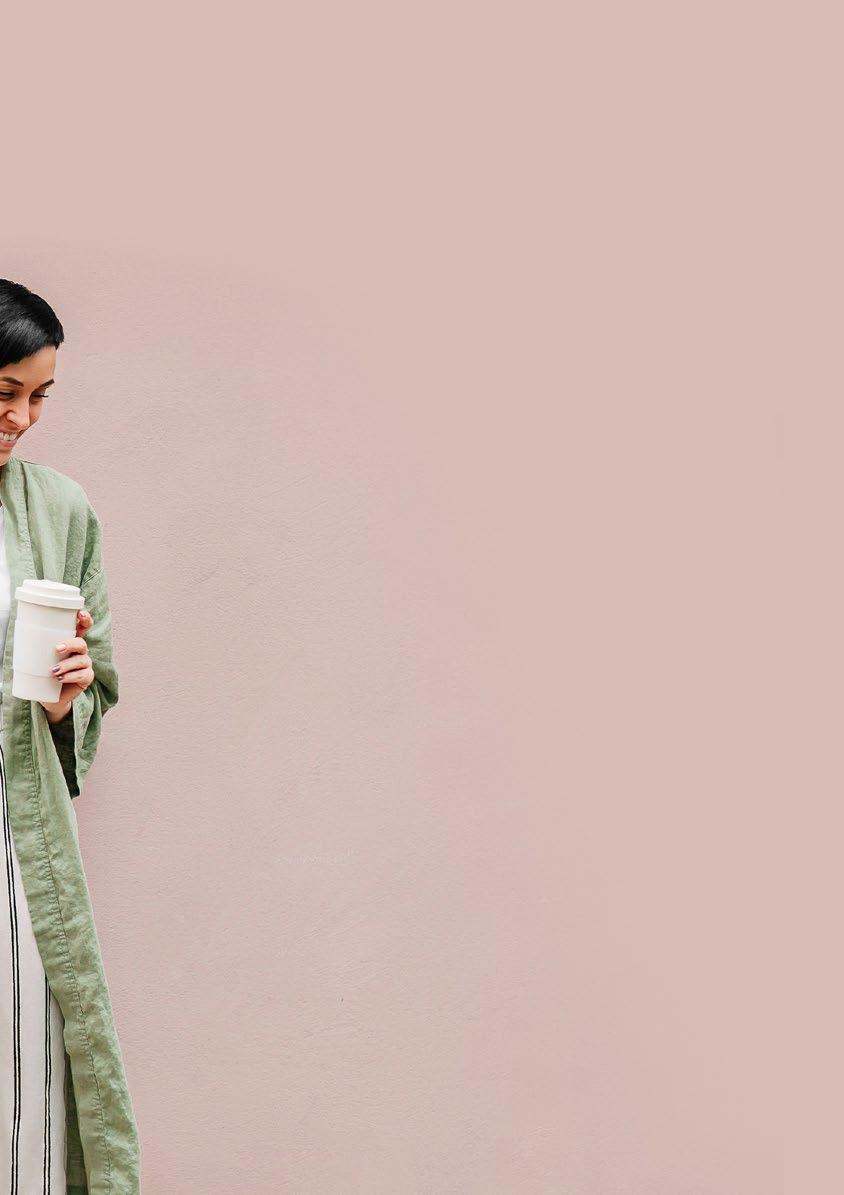
What are these? Collaborative consumption models involve sharing or renting clothing,
while social enterprises and B-corps are businesses with purposes beyond making a profit, such as ensuring living wages for workers and minimising or eliminating environmental impacts.
There are also methods that don’t rely on money, such as swapping or borrowing clothes with friends and altering or redesigning clothes in repair cafes and sewing circles.
Finally, as consumers we must nurture a diversity of clothing cultures, including incorporating the knowledge of Indigenous fashion design, which has respect for the environment at its core.
Communities of exchange should be encouraged to recognise the cultural value of clothing, and to rebuild emotional connections with garments and support long-term use and care.
What now?
Shifting fashion from a perpetual growth model to a sustainable approach will not be easy. Moving to a post-growth fashion industry would require policymakers and the industry to bring in a wide range of reforms, and re-imagine roles and responsibilities in society.
You might think this is too hard. But the status quo of constant growth cannot last.
It’s better we act to shape the future of fashion and work towards a wardrobe good for people and planet – rather than let a tidal wave of wasted clothing soak up resources, energy and our very limited carbon budget.
Written by the University of Technology
Sydney’s Samantha Sharpe (Research Director, Institute for Sustainable Futures(, Monique Retamal (Research Director, Institute for Sustainable Futures) and Taylor Brydges (Research Principal). This article is republished from The Conversation under a Creative Commons license. Read the original article.
Pinky McKay, One of Australia’s most recognised and respected breastfeeding experts and an Internationally Board-Certified Lactation Consultant is frustrated by the ignorance of health professionals who are giving appalling advice that is failing breastfeeding women.
Check out some of these horrifying stories:
A baby was ‘diagnosed’ with a ‘sleep onset disorder’ because baby falls asleep on the breast. Hormones in breastmilk induce sleep, so why wouldn’t a mother utilise this fantastic tool? And even if you give a bottle, warm milk and sucking help relaxation – it’s not a ‘disorder’!
A newly birthed mother told by a midwife that because she had expressed colostrum antenatally she had ‘used it all up’ and now would have no milk to feed her baby: Expressing antenatally is an evidencebased practice commonly advised, especially for women with diabetes whose babies may need support for low blood sugar levels or if medical interventions mean the first breastfeed may be delayed due to early separation of mother and baby. This mother was confused and upset, thinking she now wouldn’t be able to breastfeed at all.
A mother who was successfully breastfeeding, told to wean her baby by a health professional because her baby would be harmed by the antibiotics he had prescribed after a minor procedure: While a few medications are contra-indicated while breastfeeding, there is usually an effective alternative. If any medication is prescribed short-term that is unsafe passing through breastmilk, a mother could simply pump and dump that milk then continue breastfeeding when she stops the medication. This mother weaned her baby as advised and is now suffering regret and grief about an unnecessary decision.
A mother whose baby had a low weight gain at one visit, was told by her child health nurse that her baby could have ‘Small Baby Syndrome’. The word ‘syndrome’ terrified the new mother. With appropriate support and strategies to increase her milk supply, the mother continued breast-feeding and baby thrived.

“Almost daily, I am hearing from vulnerable women who are suffering anxiety, grief and guilt that they have failed their babies because they have stopped breastfeeding. These women are not failing at all – they are being failed by inappropriate advice.”
By preparing for breastfeeding BEFORE you have your baby, you give yourself a much better chance of beating the ‘booby traps’ and getting through the early days more easily. McKay says, “breastfeeding is natural but it’s also a learned skill like riding a bike or driving a car and it can be challenging at first. Besides, you wouldn’t simply hop on a bike or get in a car and expect to cruise off without any instruction or preparation, would you?” And if you have any doubts or confusion about breastfeeding advice, please don’t hesitate to get another opinion.
For more support visit www.pinkymckay.com
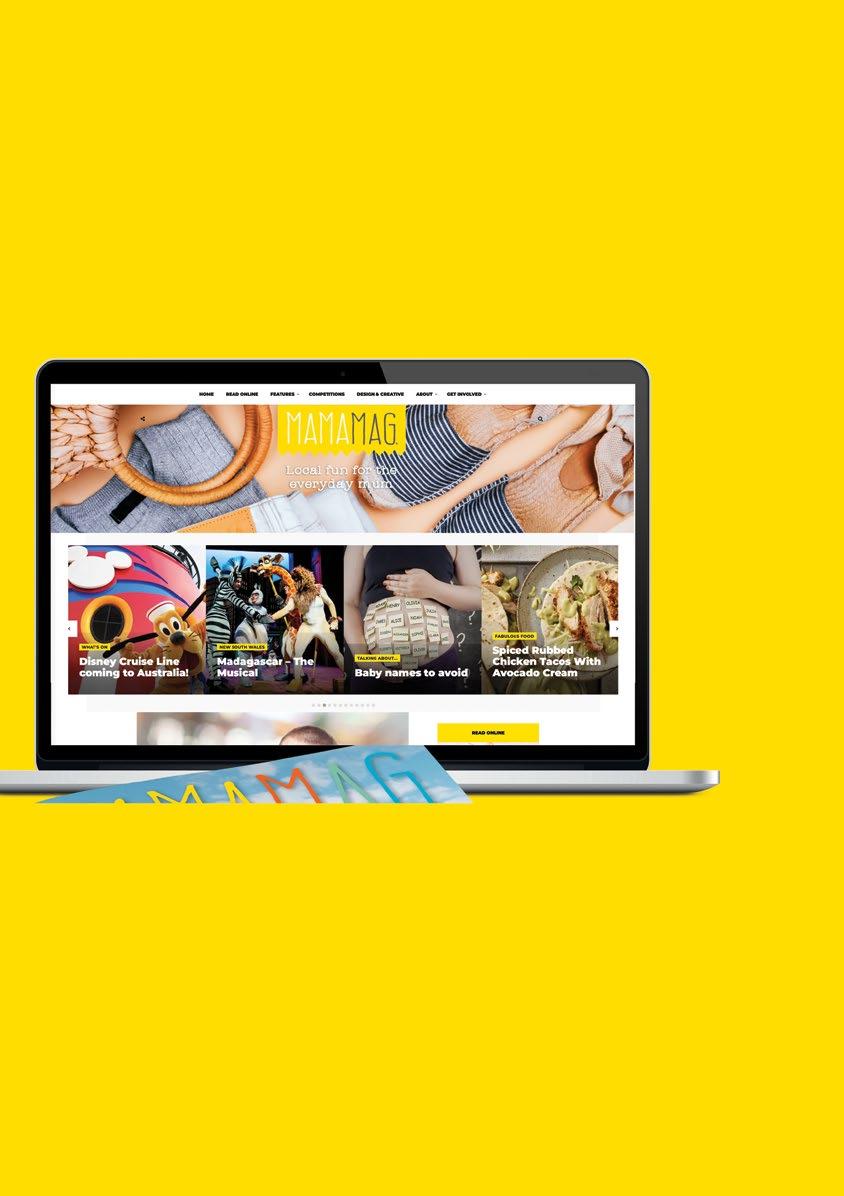
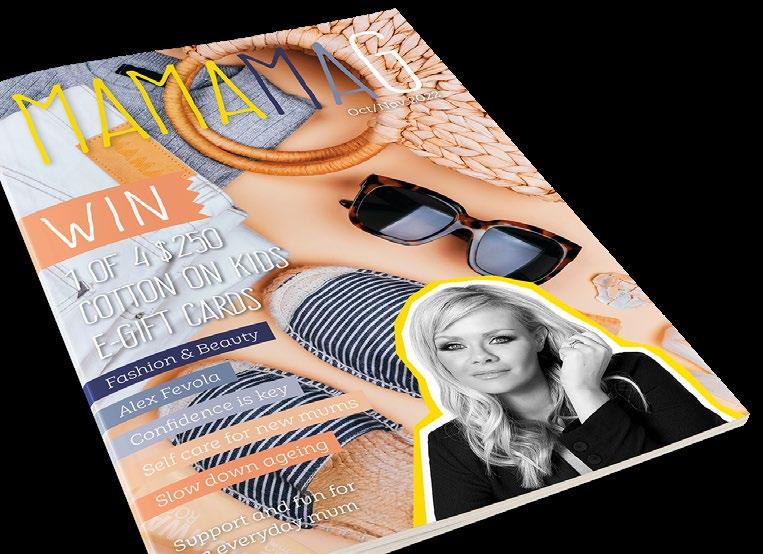

When I returned to work four days a week at Australian Vogue when Arabella was seven months old, I had a plan. I had been granted something all mothers desperately plead for, yet not nearly enough are given: the elusive gift of flexibility. When we’re handed it, after much negotiation, we’re made to feel like we’re the luckiest woman alive when, frankly, it should be a human right. With flexibility, we’re also handed a pay cut, even though the reality is, we’ll still be logging on during those days when we’re at the park with our babies, and late at night. The work doesn’t stop and neither do we. I was to work three days in the office and one from home. Fridays off to spend quality time bonding with my baby. Best laid plans.
In the beginning, it was fun. I’d get dressed up in real clothes, take my time to make a cup of tea in the kitchen with a work colleague, sit at my desk and feel like a grown-up with a proper job. The feeling of isolation went. I had an endless supply of adults to talk to and being at work felt like a mini-break; a holiday from the intense mental stimulation it took to rock a baby to sleep day in and day out. But then the logistical challenges started. I wanted to continue breastfeeding. After the guilt of giving birth at 34 weeks, breastfeeding was something I could do well. It felt like the runner up prize. The part I hadn’t got wrong. Growing a baby to term – fail. Breastfeeding – pass. In the office, there was nowhere for mothers to go to breastfeed.
In hindsight I should have taken my top off and sat there pumping at my desk, to make a point.
‘How’s that deadline going? Also, I’m keeping a small human alive and I’m about to start leaking. Where can I milk myself?’
Being a mum also wasn’t deemed ‘cool’. This wasn’t Mother & Baby magazine, this
was Vogue. But something inside me also changed. The runways filled with clothes I couldn’t afford, worn on models who were sizes I’d never be, felt suddenly trivial to me. I saw the magazine in a different light – and felt disconnected from a world I’d once loved so much. I’d felt such relief on maternity leave when I could put away my Gucci sample sale buys and live in a wardrobe of jeans and J.Crew T-shirts. This freedom was replaced with ‘What the fuck am I going to wear that makes me look like I’m definitely not a mum but, instead, someone who looks like she works at Vogue?’ How was I supposed to afford all these clothes?
The cost of a baby makes a Hermès Birkin bag look cheap. I didn’t feel like someone who worked at Vogue. The professional identity crisis hit hard. Who was I? What had happened to my seamless return-to-work plan?
After the novelty wore off – those three days in the office were agony – I came face to face with the impossibilities of being a working mother in a system not set up for parents. I’d sit in long meetings wondering why we wasted so much time talking instead of doing. I worked quickly and efficiently, trying to fly through as much as I could before my hard finish at 5.30pm. Gone were the days where I could stay in the office until late into the night. I had another job now – a ‘mother of a job’ as author Christine Armstrong coined it – and needed to get to my next shift. The after-hour events were a logistical nightmare. Our nanny was the highest paid person in our household. I paid her so I could keep my career going.
I’m painfully aware how wrong it is to automatically assume the cost of childcare should be equated to the woman’s salary.
It’s a collective responsibility, yet because women are seen as the traditional carers for children, the cost of childcare is often weighted against a woman’s salary – if she earns too little, then the expectation is that she’ll stay at home, I’m told time and again by women, ‘because it makes more sense financially’. Does it really? I’m also aware that the gender wage gap is mostly a penalty for bearing children – it’s the motherhood penalty.
Having kids doesn’t affect men’s salaries. The woman takes the hit.
There’s also some evidence of a ‘fatherhood bonus’ in which men’s earnings increase. Long term, it’s disastrous for women’s careers and finances. The longer we stay out of the workforce, the harder it is to get back in. When we finally do get back in, our salaries are significantly lower than that of our male counterparts and, often, there’s a huge crisis of confidence. I know many highly accomplished women who have had children, stay at home and then spend years lacking the confidence to get back out there.
In Australia, women are three times more likely to be working part-time than men. Many of these women are working mothers looking after children. The value of unpaid childcare work is around $345 billion,* which makes it almost three times larger than the financial and insurance sector combined.
For every hour of unpaid care work done by men, women do one hour and 48 minutes. Pissed off yet? I am.
In the office, I’d start moving objects around my desk at 5.20pm. It was my non-verbal attempt to communicate to my colleagues that I was about to exit. I’d leave in a hurry at 5.30pm only to fly through the door at 6pm to find my baby asleep and turn to see Guilty staring at me, asking why I’d only spent two hours with my child that day. ‘Bad mother,’ she’d say, and walk off.
I’d lie by Arabella’s cot at night, hoping she’d wake up, and at the first noise I’d get her up. Those were the nights she slept. The other mornings I’d wake to my alarm, delirious from the broken sleep. I’d somehow get myself out the door and try to act like I was the person I used to be, before I became a mother. I could do this. I had to do this.
When I fell pregnant unexpectedly when Arabella was 10 months old, after a drunken evening where I assured my husband there was definitely no way I could get pregnant, I knew life needed to change. I had no idea just how much.
I walked into my boss’s office and started to cry.
‘I knew this was coming,’ she said, gently. She knew because she’d been there. She’d been given the job of her life – the editor of Harper’s BAZAAR – when her twin girls were toddlers. She knew how hard it was to make work work. You couldn’t have it all. Or do it all.
‘I’m pregnant,’ I told her. ‘Again.’
I could see the worry in her eyes – it was likely I would have a premature birth again.
It was agreed that I’d take a longer maternity leave this time. ‘Take your time. Your job will be here when you come back.’ I never imagined I wouldn’t make it back. That as much as I was trying not to act like a mum, I was a mum. There was nowhere to hide.
I continued working, until at 23 weeks my cervix started shortening again. I was given the same instructions as before: go to hospital to have steroid shots and then go on bed rest.
It was like someone had pressed the pause button on my life. I had a 1 year old who needed my attention and a growing baby –I didn’t bother to track if it was the size of a pea or an olive with our second. I was just desperate to hold onto it. I got onto Google. At 23 weeks, even with full resuscitation and intensive medical care, the chance of your baby surviving is small. Breathe. At 28 weeks, the survival rate for your baby jumps to 80 to 90 per cent. My anxiety went through the roof. I had to get to 28 weeks. Please, please, please.
This is an edited extract from Best Laid Plans by Georgie Abay, out now from Affirm Press.
From former deputy editor of Australian Vogue, author and podcaster Georgie Abay, Best Laid Plans is an honest and frank look at how life often plays out like trying to walk in a straight line after ten margaritas!
What does it mean to be a ‘good’ cook? The flick of a wrist, a pinch of the fingers, the whiff of a waft. It’s intuition and muscle memory. It’s a way of life built on a foundation of flying hours.

From time spent at your grandmother’s apron strings, podding broad beans and rolling pasta dough between chubby fingers. From home economics classes, rubbing butter into scone dough, committing the crack of golden caramel to canon and the reward of some kind of sweet slice to scoff on the school bus home. From ‘bring-a-plates’, and ‘grown-up’ dinner parties where you learn to keep things simple … eventually. It’s first dates, and first sunken cakes hidden under cream.
But what happens if you missed a stage? Or three?
You’re not alone. As we’ve become busier, the intergenerational family experience has become less common, and schools turn kitchens into science labs, when does the practice plane actually take off to get those flying hours under the belt? And when it does come time to start, how do we make the experience of cooking something to actually look forward to?
First of all, let’s toss out the concept of being a ‘good’ cook, and replace it with the idea of becoming a better cook. Better Cooking is a lifelong journey. It’s made up of single steps, with plenty of whoopsies and notes-for-next-time along the way. But every step gets you a bit closer to cracking the codes that unlock the confidence to feel freedom and joy in the kitchen. I believe that ‘foodie’ is a word to be embraced rather than shirked, because it can also mean more conscientious consumption. But foodie culture also has a lot to answer for when it comes to making newbies feel out of their depth. Shaking off the imposter syndrome that can plague anyone who’s watched a fancy food show or heard the loaded line ‘It’s just that easy’ from a TV chef, can feel impossible if we’re stuck at the first
hurdle. It can mean people give up and label themselves ‘bad cooks’ or say they ‘don’t cook’ and never try.
Labels are powerful, for better or worse. I’m here to tell you that you are already a better cook than you think you are.
If you’ve ever found yourself thinking about dinner over breakfast, if bringing pleasure and nourishment to the people in your orbit gives you a glow, heck — if you already enjoy the eating part, you can find the fun in getting the food to the table, too.
Forget about cooking for someone else’s tastes or expectations. I’ve tried doing that in the past and would strongly not recommend. Why? Because fear lives here, and the paralysis of choice. Oh, and doubt, of course, about what it is you should be doing, and whether you’re good enough.
The best part about cooking, and about food in general, is the connection and sharing it encourages. Connecting people with ideas and concepts, with each other, with their community, their culture. The sharing we’re privy to over a meal, and the sharing of recipes — old scrapbooks, laminated newspaper clippings, a link flicked over on the phone or in an email. Most of all, what brings me the deepest gratitude and joy in doing what I do, more than anything, is the opportunity to connect and share with you.
Please do keep in touch.
Focaccia translates to ‘hearth bread’, which is handy, because while most overnight doughs are hoping for a high rise, this one’s all about the chew.
Serves: 8.
Overnight Dough:
3 cups strong/bread flour
2 teaspoons dried yeast
1 1/2 teaspoons salt flakes
1 1/2 cups lukewarm water
1 tablespoon olive oil
Toppings:
Multi-coloured capsicums (peppers) and mild chillies, thinly sliced
Multi-coloured tomato slices
Red onion thinly sliced
Mixed herbs, chopped Olives, capers, artichokes or sun-dried tomatoes
Olive oil, for drizzling
Sea salt flakes, for sprinkling
A small handful of rosemary Olive oil, for drizzling
Method:
Place all the overnight dough ingredients in a bowl. Mix with a wooden spoon to combine, until you have a wet, sticky dough. Cover with

a clean damp tea towel and leave in the fridge for at least 8 hours, preferably overnight.
About 4 hours before baking, take the dough out of the fridge and let it come to room temperature. Punch the dough down — which is exactly how it sounds! — and give it a little knead to bring it all together into a ball.
Line a 25 x 30 cm baking tray with baking paper. Place the dough on top, stretching and pressing it out with your fingers into whatever shape you like. Allow the dough to rise again in a warm spot for 1–2 hours, covered again with a damp tea towel.
When ready to bake, preheat the oven to 180°C. In a bowl, toss your garden topping ingredients (or rosemary leaves if you’re going tradish) in a few tablespoons of olive oil, so they don’t go dry too quickly and burn.
Using your fingers, press dimples into the dough, then squish the topping ingredients into your creation. Scatter with salt flakes and freshly cracked black pepper. Pour water into a heatproof mug or baking dish and sit it on the bottom of the oven to create steam (this helps the focaccia expand before forming a crust). Bake the focaccia on the middle shelf of the oven for 35–45 minutes, or until golden and cooked through. Some of your vegies might char a bit, but that’s cool — these can even be the most delicious aspects of the bake.
Once cooked but while still HOT, drizzle with a little more olive oil, and garnish with more fresh herbs if you like. Then either show off your creative genius as a whole loaf at the table, or cut into jaunty pieces to serve.

Ingredients:
250 g peeled raw prawn tails
3/4 teaspoon bicarb soda
1 generous thumb-sized knob fresh ginger, peeled
2–3 garlic cloves, peeled
2 tablespoons oyster sauce
1 tablespoon light soy sauce
1 tblspn shaoxing rice wine
1 tablespoon sesame oil
1 tablespoon cornflour
½ cup (125 ml) water, plus an extra ½ cup (125 ml) on standby
2 tablespoons vegetable oil
2 bunches of asparagus, cut into 5 cm lengths
6 spring onions, white and green bits cut into 5 cm lengths, plus extra thinly sliced spring onion to serve
1 cup (150 g) roasted macadamias
Steamed jasmine rice, to serve
To ‘velvet’ the prawns, slice the tails in half through the centre and massage the bicarbonate of soda into the flesh, then leave to rest for 15 minutes.
Finely grate half the ginger and all the garlic. Slice the other ginger half into rough chunks and reserve.
In a bowl, whisk together the grated ginger, garlic, oyster sauce, soy sauce, rice wine, sesame oil, cornflour and ½ cup water until combined. Set aside as your stir-fry sauce.
Rinse the prawns thoroughly in a colander and pat dry with paper towel.
Heat 1 tablespoon of the vegetable oil in a wok or large frying pan until very hot. Add the prawn meat and stir-fry for 30–60 seconds then set aside. Wipe out the wok with paper towel and reheat the

remaining oil.
Pop the asparagus and spring onion into a colander and into the sink, then pour boiled water over them. Drain well, then add to the hot wok and stir-fry for 2 minutes. Give your stir-fry sauce another whisk to reincorporate everything, then pour it into the hot wok and bring to the boil. Toss the prawns and nuts through. The sauce should be silky and glossy, which will happen almost instantly. If you find the liquid gets absorbed way too fast, splash in another ½ cup (125 ml) water and allow this to incorporate, too. Taste for seasoning.
Serve topped with extra spring onion, with bowls of steamed jasmine rice, and add this to the weekly rotation.
Serves: 4
What I love most about this stir-fry is how quickly everything comes together. By the time you’ve rinsed your jasmine rice and got it cooking away, the prawns will have ‘velveted’ and the rest of the ingredients will be ready to roll.
Place any left-over dough on a piece of baking paper, roll up into a log (twisting the edges so it looks like salami) and stash in the freezer. When you have a hankering, simply slice off 1 cm pieces and bake as normal.
Ingredients:
1/3 cup (40 g) icing sugar
250 g unsalted butter, softened
1½ cups (225 g) plain flour, plus extra for dusting (see Subs)
½ cup (75 g) custard powder
1 teaspoon baking powder
¼ teaspoon salt flakes
Marmalade buttercream”
100 g unsalted butter, softened 2/3 cup (85 g) icing sugar, plus extra for dusting
Zest and juice of ½ orange
1 heaped tablespoon orange marmalade
Line two light-coloured baking trays (ideally biscuit trays) with baking paper.
If your icing sugar is lumpy, pop it into a food processor and blitz, or mash with a rolling pin.
Using a stand mixer with the paddle attachment, beat the softened butter until uniformly soft, then add the icing sugar and beat until the mixture is pale and creamy.
Sift together the flour, custard powder and baking powder. Add to the butter mixture, along with the salt, and mix with a wooden spoon until just combined.
Use a teaspoon measure dusted with a smidge of flour to scoop out 2 level teaspoons (5 g) of the mixture, rolling into walnut-sized balls between your hands. Evenly space the balls out on the baking trays. Pop the trays in the fridge to chill for at least 15 minutes.

Preheat the oven to 150°C. Use a floured fork to press each dough ball into a 2 cm disc. Bake for 15–18 minutes, until the biscuits are set enough
to be dislodged with a gentle prod, are custard-yellow in colour and the bottom is still blonde. Allow to cool for 10 minutes, then cool completely on a wire rack before filling.
Make your buttercream in the stand mixer by creaming the butter and icing sugar together until super pale. Add the orange zest, juice and marmalade.
PIpe buttercream onto halfthe biscuits, or spread a teaspoon of filling over them. Pop the unfilled biscuits on top squashing ever so slightly.
Give the whole lot one last dusting of icing sugar as a final flourish.
The biscuits will keep in an airtight container in a cool place for up to 5 days. They can also be frozen (filled or unfilled) for up to 3 months.
Makes: 25.
As an author, speaker and coach on productivity, I’m often asked about competing priorities and the need to say “no”. It can be challenging and uncomfortable to say no in a work situation however we can quickly become overwhelmed and out of control, leading to stress and burnout, if say yes to everything.


Saying “no” often leads to feelings of guilt or anxiety because we can feel like we are not collaborating, co-operating or being a team player when in fact it’s the opposite that is true. Setting boundaries that allow you to show up as your best and most productive self will enable you to be a better team player.
It starts with defining your boundaries. When people think of boundaries, many assume we are talking about rules that govern personal space. Healthy work-related boundaries go much deeper. They define
how much of yourself you give to your career and guide how you form relationships with managers, colleagues, and clients. They also help make time for the important things, like the people and activities in your life outside of work.
Boundaries set basic guidelines for the way you want to be treated, and ensure relationships are mutually respectful, appropriate, and caring. They can mean the difference between career/work fulfilment and burnout.
When it comes to setting boundaries, ask yourself:
• Who am I willing, or not, to give time to?
• What do I want, or not want, to do or achieve?
• When do I need to protect time, and when do I want to make myself available?
• Where can I put in place contextual markers about the physical locations of work, play and rest?
• Why would I give one person or activity attention over another?
One of the toughest things to do when setting boundaries is sticking to them by saying “no”.
Here are 4 things to consider when it comes to saying no.
Many people assume they have no choice but to say yes because the person making the request is more senior or influential or unreasonable. If you always assume people are unreasonable, then you will end up saying “yes” and later feeling resentful. If you assume people are reasonable, flexible or able to compromise, the interaction will be more productive.
By giving a clear explanation as to why you are unable to take on this work or project will improve your chances of a more favourable response. This is not about making excuses but giving a sound reason why you are saying no.
If it is a timing thing, you may say that you can’t do it today, but could do it later in the week. If you are at, or close to, capacity, you might say you can take on a small part of the work. You may even suggest that someone else may have more capacity to take on the work. There is almost always room to compromise.
We can’t say no to everything, or we will get a reputation for being difficult or a noncontributor. We all have had to do things that we don’t personally enjoy and saying no just because you don’t like something is not a valid reason.

Finally, here are some words or phrases you can use that can help with saying no.
• Thank you for thinking of me and unfortunately, I can’t commit to this as I have already prioritised [other work] for this week.
• I have a lot on my plate right now and can’t take on anything more.
• Now is not a great time as my schedule is full until [date]. Did you want to schedule a time in a few weeks to revisit this?
• I’m not sure I’m the right person for this given my expertise. This feels more like something [person’s name] would be more suited for.
If this is something that is uncomfortable for you, rehearse them so that they can roll effortless off the tongue.
Ultimately, saying no and creating boundaries will make you easier to work with. You will have a reputation for being open, upfront and direct rather than committing to things you don’t have the capacity for and being late or resentful.
Donna McGeorge is a best-selling author and global authority on productivity.
Her book series, It’s About time covers meetings, structuring your day, and doing more with less is available in bookstores around Australia or can be ordered online via Donna’s website at www.donnamcgeorge.com
Furball is the world’s greatest spy! But he’d rather spend his time napping or snacking. When Furball and his spy friends, Jade and Kit, visit a waterpark on their day off, they learn Furball’s greatest enemy is using the park as a secret base!
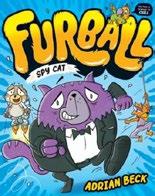
Can Furball and his friends stop the Baddies before they destroy the city? Or will Furball get distracted by the snack bar?
Published by Larrikin House. RRP $13.59.
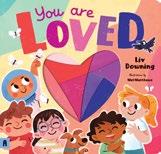
A warm and reassuring celebration of unconditional love. Cut outs on each page create a beautiful heart to make this book a very special object to treasure and share. You are loved when you win the race. You are loved when you don’t. You are loved when you brush your teeth. You are loved when you won’t. And if you forget, put your hand on your heart and feel the love again. This beautiful and timely book affirms and reassures children that they are loved, no matter what.
Published by Allen and Unwin. RRP $24.99.
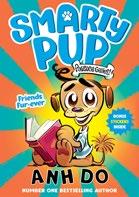
The first ever full-colour adventure from mega-bestselling author Anh Do. Hi! My name is Lily. Nothing exciting ever happens to me. Right now, I have a potato in my schoolbag because it was the most interesting thing I could find for show-and-tell. But all that’s going to change now that we are getting a dog... Lily’s new pup JJ is kind of clumsy, but something about his smiley face makes her really happy inside. So you can imagine Lily’s surprise when she wakes up to discover that JJ can TALK and is SUPER SMART. In fact, he might have the smartest brain in the whole wide world!
Published by Allen and Unwin. RRP $15.99.

It’s Joe’s first day at a new school. It’s big, scary and different. Can’t he just go back to the way things were? When Mae hears that there’s a new kid starting school, she can’t wait to meet him. Is this her chance to make a true friend?
Follow the heart-warming story of a new friendship in this innovative title, comprised of two books telling two different perspectives! This uplifting tale of overcoming fears and making new friends is the perfect gift for anyone struggling with new challenges.
Published by Allen and Unwin. RRP $19.99.

Reece Carter’s A Girl Called Corpse is a fresh, unique and heartwarming debut about a lonely kid ghost searching for answers. With a body made of wax, seaweed for hair and polished abalone shells for eyes, Corpse is bound to haunt the Witches’ sea shack forever. She has no memory of her name or who she was before the Witches snatched her and took her to the rock-that-doesn’t-exist.
Published by Allen and Unwin. RRP $16.99.

From spectator to superstar, that’s The Champ! Summer is back for another fast-paced and funny adventure. Summer used to always be picked last for a sports team, but one day her life changed forever. Now she has the skills of the greatest sports stars who ever lived. Now she is THE CHAMP! When everyone’s favourite rock band is kidnapped by the mysterious Book Witch, it’s up to Summer and her sidekick Ice-Cream Boy to save the day. Go, Champ! Go!
Published by Allen and Unwin. RRP $15.99.

Lori’s game just gets better. She’s practicing constantly in her after-school program, and although she’s still only playing in the fifth quarter, she’s starting to feel confident on the court. But growing brings change; her friends start to branch off into different interests, and even different basketball teams. At home, the family dynamics are changing too, with her dad going back to work, and her mum staying home with the kids for the first time in Lori’s life. The brewing tension unsettles Lori, and she begins holding herself back. With the support of her family, and the expertise of her soccer-player-turned-coach mum, Lori must learn how to trust herself and take chances, not just on the court, but in life as well.
Published by Macmillan. RRP $24.99.

Lin Moser is not looking forward to this summer. After living on the road all her life, hiking mountains and traveling through the country in an RV with her house-flipping parents, she’s now stuck in Newbridge for their longest stay yet. With Mum away on a year-long naturalist assignment, Lin has resigned herself to having the most boring summer ever. But then she finds out about a local legend: an ancient ruined castle in the woods that no one has been able to find. Hiking to this castle would be such an amazing quest, that Mum might even come home and join her.
Published by Allen and Unwin Childrens. RRP $32.99.
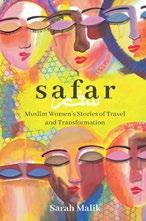
Safar: Muslim Women’s Stories of Travel and Transformation is a beautifully illustrated gift book that explores the emotional and spiritual aspects of journeying. Through a series of interviews with Muslim women from diverse backgrounds, Australian journalist Sarah Malik considers personal growth and self-knowledge in the context of travel. There are fascinating stories of love and friendship, as well as stories of how travel connects to roots, spirituality, confidence, identity, privilege and inspiration.
Published by Hardie Grant. RRP $32.99 Pub Date: 3 November.

Brittany Hockley and Laura Byrne, former Bachelor finalists and hosts of the number-one podcast Life Uncut, have fumbled their way through it all. And they’re here to make you feel a little less alone in the chaos. Now they’ve distilled their most trusted and true advice into a book that’s as much about romance as it is about loving ourselves. WE LOVE LOVE is an encyclopaedia of life as Britt and Laura have lived it, full of hard-won wisdom, hilarious anecdotes, serious challenges and refreshing honesty.
Published by Penguin. RRP $35.00.
The Ninth Life of a Diamond Miner: A memoir by Grace Taylor

Grace Tame has never walked on middle ground. From a young age, her life was defined by uncertainty - by trauma and strength, sadness and hope, terrible lows and wondrous highs. As a teenager she found the courage to speak up after experiencing awful and ongoing child sexual abuse. In 2021 Grace stepped squarely into the public eye as the Australian of the Year, and was the catalyst for a tidal wave of conversation and action. She was using her voice and encouraging others to use theirs too.
Published by Macmillan. RRP $49.99
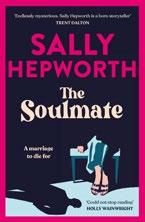
He said she jumped. He wouldn’t lie.
Before the woman went over the cliff, Pippa and Gabe were happy. They had the kind of marriage that everyone envies, as well as two sweet young daughters, a supportive family, and a picturesque cliff-side home - which would have been idyllic had the tall beachside cliffs not become so popular among those wishing to end their lives.Gabe has become somewhat of a local hero since they moved to the cliff house, talking seven people down from stepping off the edge. But when Gabe fails to save the eighth, a sordid web of secrets begins to unravel, pushing bonds of loyalty and love to the brink. What wouldn’t you do for your soulmate?
Published by Macmillan. RRP $32.99.



Once upon a time, I was shy, really, really shy. As an immigrant, English is not my first language and I severely lacked confidence. In 2018, I had a new year’s resolution of having 100 lunches with 100 strangers to overcome my shyness. Since then my life has changed in every single way. From socially awkward and avoiding people to confidently mingling around networking events to hosting my own parties to help bring people together. I used to believe I was one of the ‘unlucky ones’ who weren’t born with the ‘social genes’. Then I realised being able to be social with confidence is a learned skill and we can all become better. Here are seven tips to be really confident in any social situation:
Anxiety comes from the fear of the unknown, so one way to reduce the anxiety, is by reducing the unknown. Do some preparations before you go to the events, check out the venue prior, ask for the guest lists and do some research on them if you can. Most important of all, plan your questions and answers. In most social situations, people aren’t very creative in asking questions. The 3 most commonly asked questions are – ‘What do you do for work?’, ‘Where do you come from?’, ‘What brought you here today?’. Having these answers ready will help you start the conversations going.
Another important thing you can prepare in advance is having 3-5 good stories ready to share. Ideally, one that happened recently and one that makes people smile. Don’t worry about sharing the same stories again because they are new audiences and have never heard of them before. Stories connect people and make you memorable. It also helps you become more interesting too. When someone asks you ‘how was your weekend?’, instead of saying ‘Good’, surprise them with your prepared story!
Who controls and leads the conversation? The one who asks questions or the one answers questions? If you answer ‘ask’, then you’re correct; even the one answers speak more. Ask questions that interest you. If you can
get someone to share something they never shared with anyone, they will remember you for a long time. The best questions to ask are the ones that encourage the other party to share more, such as ‘tell me more!’, ‘and then..?’ ‘what happened next?’ ‘How did that make you feel?’ Asking questions helps you to learn more about the other person and see what you have in common to build deeper connections.
What do you do after you ask the questions? Listen to the answers. Not just with your ears but with your heart and eyes. Watch their body language, feel the emotions behind the share and your yourself in their shoes and see what you would do. Don’t worry about impressing them by being interesting or worrying about what to reply. ‘You make more friends in two months by becoming genuinely interested in other people than you can in two years by trying to get other people interested in you’. (Dale Carnegie)
The main reason people lack confidence is worrying too much about what other people think. Please don’t. As an immigrant, I tried hard to ‘fit in’ and be better. However, after meeting so many people and hearing their stories, I realized I could not even ‘fit in if I tried because everyone’s unique. Being confident doesn’t mean you go into a room thinking you are better (that’s arrogant!). Being confident means, you go into a room and don’t need to compare because you embrace diversity. Remember, we are worthy
of love and success. We are valued and important. It is not your responsibility to make others like you. It is your responsibility to show the world who you really are, and the right people will come.
This one sounds cliché but true. When I first started my lunch with strangers’ journey, I was terrified, then I became comfortable with it, and now I love it (350+ lunches and counting). When I first started public speaking, I was terrified, became comfortable with it, and now I love it (It is now my career). If we focus on the fear, we are giving it power. Embrace the fear and I promise it will get easier.

Confidence is a state, just like being happy or being angry. Some people are generally happy or angry, but no one is always happy, angry or confident 24/7. Over the last few years, thanks to all the strangers, my confidence
grew massively. However, that didn’t make me invincible. There were still moments that I lacked my confidence. I remembered 2 years ago; I attended a conference with 300 professional speakers when I had just started my speaking career. I was the youngest, least experienced person in the room, and I felt inadequate. I was intimidated. I left the room, freshen up myself and walked back into the room 10 minutes later, feeling much better.
Practice makes progress. Stay positive and keep going. Remember, the only approval that truly matters is our self-approval. Always stand up after we fall; in no time, we will become unstoppable.
Kaley Chu is the author of the book ‘100 Lunches with strangers’, a keynote speaker and a confidence coach. She believes ‘One connection can change your life’ and please feel free to invite her to lunch! Find out more at www.kaleychu.com.
“Practice makes progress. Stay positive & keep going.”
Ninety years ago, a Danish carpenter crafted a line of small wooden toys in his Billund Denmark workshop. Ole’s first collection had a modest 36 items that included cars, aeroplanes, and yoyos, all carefully crafted to help local children learn about the world.
Twenty-six years after Ole made his first wooden toy, his son Godtfred patented the LEGO® brick we know today, with its interlocking tube system offering endless creative building possibilities. Since then, the LEGO® brick has been busy. From a few simple bricks in primary colours, the humble brick has formed the basis of over 18,000 LEGO products, received the Hollywood treatment in THE LEGO MOVIE™, helped children learn about robotics and coding through LEGO® MINDSTORMS®, and inspired hours of playful digital adventures in over 180 LEGO® video games.
Throughout time, Ole’s passion for fun and high-quality toys has endured as his legacy. In fact, the “LEGO” name comes from two Danish words “Leg Godt”, meaning “Play Well”.
And now, new research from the LEGO® Play Well Study shows play as not only fun, but also integral to childhood development, overall happiness and family wellbeing.

Family values have always been at the heart of the LEGO® Group, which is still headquartered in Billund, Denmark, where Ole started making his first toys. To this day, it is still owned by Ole’s family with grandson Kjeld Kirk Kristiansen recently passing the helm to his own son, Thomas Kirk Kristiansen.
“
When my great-grandfather founded the company 90 years ago, he recognised that play could change the lives of children –it brings families together and helps children develop skills that can enable them to reach their full potential. He only had a small workshop, but he had big ambitions to ensure as many children as possible could experience the benefits that play brings.”
There are hundreds of ways to play. Here are some simple and easy activities for families to kick-start the fun.
Grab a handful of 10-20 LEGO pieces from whatever you have at home and see what you can create. Set a build theme or, for an extra challenge, try timing this game. This is a great activity for all ages!
Can you explain how to create a model you’ve designed without letting the other player see it first? Give it a shot! Give each person a set of the same LEGO bricks and challenge the other to build the same model with on verbal instructions
Follow this guide here to build a car out of LEGO with wheels and leave a ring in the car to fit the thread of a balloon through. Blow up your balloons and race your LEGO cars to see who is the fastest.
4. Build your own: awesome LEGO jumping car ramp
Take the balloon car game to the next level by building your own car ramp!
Spark that engineer inside and design a parachute that gets your LEGO minifigure passenger safely to the ground. Get creative with tissue paper, string, sticky tape and scissors!
The past nine decades have reinforced just how important play is to all children. That’s why 25 percent of the LEGO Group’s profit dividends go to the LEGO Foundation, giving millions of children the chance to play and learn – including those who are disadvantaged and impacted by crises. Last year, the LEGO Foundation committed over $440 million USD (over $650 million AUD) to help children around the world reach their full potential through play.
It’s all in a name – Ole turned to his employees for help naming his company, offering a bottle of his home-made wine. Perhaps luckily for his employees, he came up with the winning name himself!
Only the best is good enough – Ole’s motto still sets the bar for quality and safety. LEGO elements are dropped, crushed, heated, and tested with artificial sweat and saliva to check they can withstand being a child’s favourite toy. Butter is even used to replicate greasy fingers.
Splitting hairs – Each LEGO brick is moulded to the accuracy of a hair’s width (5my/0.005mm) to ensure the perfect ‘clutch power’ that holds LEGO creations together.
An enduring appeal – The LEGO Brick was voted Toy of the Century in 1999 - over 40 years after it was first designed.
The brick blueprint – The design of the LEGO brick we know today has remained the same since 1958 meaning bricks produced over 60 years ago fit with those made today.
A model makeover – By 2030, they are aiming to make all core LEGO products from more sustainable materials without changing the design or compromising on quality or safety. Around 150 LEGO elements are already made from sustainably sourced sugar cane and a prototype LEGO brick made from recycled PET plastic bottles was unveiled in 2021.
Big bricks for small hands – LEGO® DUPLO® was introduced to help toddlers play creatively in 1969 – DUPLO bricks are exactly double the size of LEGO bricks in all dimensions.
Standing tall – Each LEGO Minifigure measures four bricks high without its hair or any hats or accessories to ensure it matches the proportions of buildings in the LEGO System in Play.

Giving your cosmetics a spring clean is not only a great time to declutter your drawer, it’s also super important for hygiene too. We’re all guilty of harbouring a lippy from 1999 that you just don’t have the heart to bin because Troy kissed you behind the club the last time you wore it, or the dusty remnants of an old mascara you got free with a magazine, but the time has come to be brave and bin it! Aside from the dried up dusty makeup; brushes, sponges and bags can become a breeding ground for harmful germs and bacteria, so cleaning it up will be just as good for your skin as it will be for your sanity.
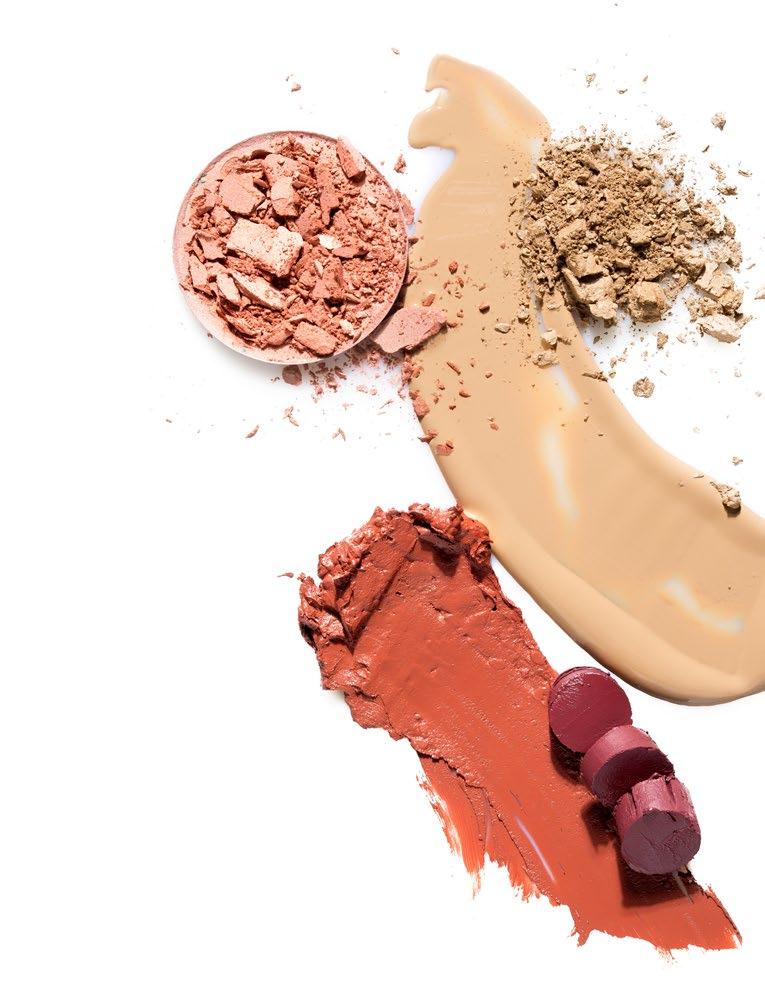
To get a clear idea of what you have versus what you need it’s all got to come out! It’s easy to forget to throw things out when you replace them, so having your whole collection in front of you is a great way to see those needles in the haystack. Turn the music up loud, drag the bin over, lay an old towel down to catch any spillage and get rummaging. Start by chucking away the visibly gross then move on to the empties and the unfixables. Remember to wash and recycle packaging wherever possible.
In the pile of ‘survivors’, check for expiration dates (jar symbol with either a 6M or 12M perhaps even a 24M if you’re lucky) and continue to fill the bin with anything that’s well past its use by. While you don’t have to be super strict on expiration dates, you do need to keep in mind they’re there for a reason. Older products may seem fine but could be home to some nasty germs, so it’s best to air on the side of caution. My thought train usually goes via these stations:
1) When did I last use it? (more than 6 months ago? Bin!) 2) Do I love it enough to risk a pimple? (No never! Bin!)
If you use a beauty sponge, now’s the time to replace it and if you use brushes, it’s time to wash them! All makeup applicators love holding on to oils and bacteria so it’s important that they’re cleaned regularly. Do it now, then set your monthly reminder.
There’s no getting away from it. Our skin tone changes as we get older and what may have suited us seven years ago, may not be quite so flashy now! So, having a good clear out of foundations that tangerine you up, and eyeshadows that even Halloween would run a mile from, is a great way to keep you and your skin looking fresh. If it’s out of date, out of style or just downright gross, be brave and bin it. Remember, cosmetics have come a long way in the past few years so you’re doing yourself and the planet a favour when you recycle the olds and consciously restock with eco friendly, sustainable beauty brands such as Inika Organic, Karen Murrell, The Body Shop and Raww Cosmetics.
That’s why Starlight exists. Captain Starlight helped Henry smile through an entire year of cancer treatment, bringing him the fun and laughter he needed to cope with life in hospital.

Donate at starlight.org.au
Matters.


As a psychologist and exercise scientist, I’ve always been intrigued by the paradox of exercise. What is that? It’s the observation that even though we know physical activity is good for us, we tend to not do enough of it. Another way to put this is we fail to act in our own self-interest, despite the constant presence of good health promotion messages. I’ve spent a lot of time thinking about this paradox over the past three years and how it might be better approached. After reflecting on my own reconnection to physical activity and analysing the experience of others, I’m convinced that to help people get moving and keep moving, you need to give them a way of really owning their health goals.
The HAP is specifically designed to help people take greater ownership over their health. It does that by assuming people have an intrinsic interest in physical activity and movement. They had it as kids but lost it as adults. This makes the change process about helping people reconnect with interests that may already be there and just need to be resurfaced. It also means the change process doesn’t need to be pushy or prescriptive. Because goal ownership is rarely enhanced by telling people what to do, it is better to give people some time to work it out for themselves by exploring what’s interesting and what might be possible.
This stage is about looking back and thinking about all the times when physical activity was positive and enjoyable for you. Whilst these memories might take a little while to surface, it is worth persisting. If they can be recalled and relived, these memories can provide a good starting point for change. Key activities in this stage can include drawing up a physical activity timeline (to trigger useful memories) and reminiscing about past experiences by contacting old teammates, or looking at old photos, trophies or mementos.
Next, it’s important to spend some time looking forwards and clarifying what you are hoping to achieve. If healthier ageing is the goal (as it is likely to be), what does that really mean? What would it enable for you? How might it benefit others? This is important for getting clear on the why of change, which is critical for supporting ongoing effort. Key activities in this stage can include writing a compelling personal vision statement and developing awareness of the what’s driving the desire for healthier ageing.
This stage is about looking inwards and assessing our physical and mental readiness for change. Both are important. Physical readiness because it’s important to match physical pursuits with current capabilities. Mental readiness because any uncertainty or lack of interest can quickly become demotivating. Key activities in this stage can include completing a valid pre-exercise screening tool and getting a health check (to assess physical readiness) and examining the pros and cons of making and not making change (to assess mental readiness).
Lastly, it’s also important to spend some time looking outwards, to help organise and access social support. This involves the formation of a physical activity eco-system, a network of people, teams, clubs and/or organisations that can support and encourage, helping to keep activity levels high, and levels of enjoyment even higher. Key activities in this stage can include identifying the most desirable forms of help, and embedding the notion of a personal eco-system by mind-mapping one’s existing support and resources.
These four steps provide a chance to pause and pre-plan before you rush off and join the gym again, and ensures you make longlasting change.

Dr Gordon Spence, author of Get Moving. Keep Moving, is a highly sought-after speaker, coach, educator and author who helps clients to live well and perform well. A psychologist and exercise scientist, Gordon’s areas of expertise are sustainable performance and healthy ageing, with a particular interest in people returning to exercise in mid-life.
For more information visit healthyageingproject.com

It wouldn’t be OzAsia Festival without Lucky Dumpling Market bringing the sights, sounds, tastes, and smells of Asia’s bustling street food markets to the centre of Adelaide!
Spend your balmy spring evenings and weekend days surrounded by Adelaide’s best vendors cooking up delicious food from Korea, Vietnam, India, the Philippines, Sri Lanka, Malaysia, Taiwan, and Turkey.

From bubble tea and baos to noodles and everyone’s favourite mouth-watering dumplings, Lucky Dumpling Market is the perfect pit-stop.
Be entertained by free live Lucky Beats performances on the Lucky Dumpling Market Stage from Thursday to Sunday, as well as family-friendly workshops and cultural activities from local community groups, each weekend.
Brought to you by the team behind Adelaide Fringe hub Gluttony, make Lucky Dumpling Market your place to be during OzAsia Festival.
20 Oct – 13 Nov 2022, FREE!
Elder Park, King William Rd, Adelaide. From 4.30pm weekdays and from 12pm on weekends.
The Moon Lantern Trail is back for another year from 20 - 23 October, lighting up Tarntanya Wama/Pinky Flat with both old favourites and brand new artworks.

Walk through the new Gate of Grace by renowned artist Tianli Zu and explore over a dozen giant lanterns along Karrawirra Pari/ River Torrens. Join interactive workshops and enjoy roving performances before having a bite at one of the food trucks on offer.
Beautiful by day and truly spectacular at night, this is the perfect activity to enjoy with the whole family and there’s plenty to do for people of all ages!
Thur, 20 Oct and Fri 21 Oct at 5pm
Sat, 22 Oct and Sun, 23 Oct at 12pm
Pinky Flat, War Memorial Dr, North Adelaide.
With exclusive access to dozens of different local foods and beverages all in the picturesque Rymill Park, Murlawirrapurka - just a cheddar roll from the Adelaide CBDCheeseFest is a festival for all!

With 70 food and beverage stalls featuring SA and Australia’s best and brightest cheese, food and beverage producers with fresh, local produce. Whether you’re a die hard foodie, a craft beer fanatic, a home fermenter, Australia’s top wino or you simply want to have a picnic and enjoy the live music with your friends and family, CheeseFest is
the place to be. CheeseFest Gather & Graze is a family affair with a dedicated kid’s corner! This year they invite ticket holders to bring their kids for a range of dedicated scheduled kid-friendly activities including live entertainment, Life Be In It Games, arts and crafts, change me-feed me and more.
Children under 12 accompanied with a parent are free to enter CheeseFest!
Rymill Park (Murlawirrapurka), Adelaide
Friday Oct 14 | 4pm - 10pm
Saturday Oct 15 | 11am - 9pm
Sunday Oct 16 | 11am - 6pm
The Planetarium is a fun and educational experience. A unique way to learn about the stars, solar system and our place in the universe. We have sessions suitable for ages four and up that are perfect for schools groups (OSHC, Scouts), a family or an astronomy buff. We run several different sessions on select Saturdays all year round and can tailor sessions to suit private bookings. A great option if you have a birthday or special occasion coming up.
Venture into outer space these school holidays with a Planetarium experience. Enjoy a tour of the cosmos guided by one of the Planetarium’s experienced astronomers and watch the mysteries of our solar system unravel on the dome-shaped ceiling.
Tue Oct 4th - Fri Oct 14. Various times. University of South Australia’s Mawson Lakes Campus. University Boulevard Mawson Lakes

Ever since Natalija was diagnosed as profoundly deaf, Loud Shirt Day has become an important part of our family’s lives so every year Natalija and myself, along with her dad Doug and two brothers, help to raise funds and awaressess during Loud Shirt Day to support other children with hearing loss reach their full potential.
Natalija was just four weeks old when she was diagnosed as profoundly deaf, six weeks old when she was fitted with her first hearing aids, and 10 months old when she received her bilateral cochlear implants.

NextSense (a First Voice centre) has been with our family through every step of Natalija’s hearing loss journey, giving the expert support she needs to develop, enjoy childhood, and meet her milestornes.
During her early months of life I’d take Natalija to a NextSense playgroup where she could have her feeds and fall asleep while her brother played with the other children and I talked to the parents about their journey.
This was my support group. My safe place. It was all very new and raw, so sometimes I would just sit there and listen to the other parents and just take it all in. While Natalija napped, I would watch other children with their hearing devices on go about their play time and chat to their friends and parents. It was very comforting.
Now at eight years old, Natalija is thriving at school and in life. She attends her local primary school, plays in her local basketball team and soccer team, is learning Japanese and karate, and her speech is at the same level as her hearing peers. She self-advocates and raises awareness about hearing loss and cochlear implants whenever she can.

The early intervention program has not only been a vital support for Natalija, but also key in providing our family with the knowledge, skills, and confidence we need to best support her as she grows.
Our therapist provides Natalija support and holds our hand and guides us on how to help further support her at home and in the school environment. The support we receive from our centre is invaluable.
A First Voice initiative, Loud Shirt Day is an opportunity to wear your wackiest shirt to celebrate, increase community awareness, and raise funds to ensure children with hearing loss, like Natalija, receive the support they need to reach their full potential. This year Loud Shirt Day is on Friday 21 October, but you can wear it loud on a day that suits you.
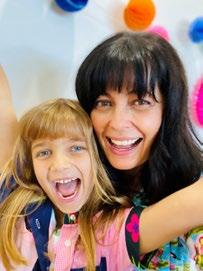
Having a child with hearing loss can be hard, but it can also be an amazing experience. You celebrate the small milestones more because your child will surprise you every day. This is why we celebrate Loud Shirt Day. To raise awareness about hearing loss in children and the devices they wear and to celebrate their achievements and milestones. My husband is going to have a Loud Shirt Day morning tea at his work, our daughter’s primary school will be wearing it loud on the day for a donation, I’ll be having a morning breakfast at an event on the day, and I’m also organising a high tea with friends and family on the Thursday prior to the day.
There are 12,000 children across Australia living with hearing loss that benefit from early diagnosis and early intervention.
The newborn hearing screening is a vital program implemented across Australia to ensure the establishment, maintenance and evaluation of high quality screening programs for the early detection of permanent childhood hearing impairment throughout Australia.
Loud Shirt Day is a national campaign run by charities across Australia who are members of First Voice. First Voice is the regional voice for member organisations that provide listening and spoken language early intervention services for children with hearing loss.

You can support children with hearing loss and celebrate their achievements by registering for Loud Shirt Day today!
Hearing loss is one of the most common disabilities at birth, affecting more than 1 in 1,000 babies born each year. Accounting for later acquired hearing loss, permanent childhood hearing loss affects more than 3 in every 1,000 Australian children by age 5. 92% of children with permanent hearing loss are born to hearing parents. More than 90% of children born with hearing loss have the potential to receive listening benefit from hearing devices, such as hearing aids or cochlear implants.
To maximise listening and spoken language development, children with hearing loss require amplification – through hearing devices – and specialised listening and spoken language early intervention. Early diagnosis of hearing loss and access to sound are integral to successful speech and language development.
If you have a concern about your hearing loss, please contact a First Voice centre

to you.
Hear and Say
Can:Do

The truth is you no longer have to age the way your parents or grandparents did. You can age on your own terms, starting now. In our crazy, busy world, the struggle to look after yourself is real, let alone decipher what you really can do that will actually make a difference to the way you age.
As women, the expectations are high and we are constantly bombarded with messages that we need to be all things to all people, including ourselves. We need to raise children that are healthy, well educated, kept off computer games and social media, but entertained with wholesome play. Add to that maintaining a home, keeping on top the bills and activities, maintaining friendships and family relationships. Plus we need to look great, exercise, sleep well and possibly even manifest our dreams and create incredible careers. PHEW, it is a lot!
So how do you become more vibrant and youthful without adding complicated routines into your already busy day? It’s about knowing what simple things you can do and understanding the importance of consistency. Small, seemingly insignificant steps taken over time will create a radical difference. You don’t have to be the smartest, fastest or the strongest – you have to be the most consistent. Let’s take a look at five great anti-ageing hacks:
Understanding happiness is one of the most significant measures for longevity and it is very empowering to know that we can work on our own happiness. It has now become a scientific field of research, with evidence indicating that happy people are healthier, have a better immune function and have less heart disease. Further, happier people have great mental health and can live up to 10 years longer. We have a certain baseline of happiness and we can raise this with long term strategies rather than the instant gratifications we usually look for. Learning these tools is highly important when slowing the ageing process. These include; not comparing ourselves to others, learning that we can only be happy in the present, letting go of resentment, practicing kindness, being grateful and avoiding perfectionism.
Giving your body a rest from having to process what you are putting in to it has extraordinary results. You can choose to fast for a day, or to restrict the time that you eat in any one day. For example you may choose to eat only between 11am and 7pm. Going into a fasting state not only helps you lose weight but can propel the genes to function better in repairing the body. It can increase levels of human growth hormones and delay ageing. Practicing this a couple of times a week consistently will have amazing results over time.
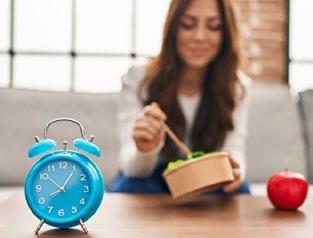

Our mind is our most precious and valuable resource and we use it to experience every single moment of our life. We depend on our mind to be focused and perform at our very best so it’s important to take care of it. This can be done in a as little as 15 minutes a day. Consistent meditation can reduce blood pressure, stress and anxiety, improve your sleep and boost your immune system, all helping to slow the ageing process. This is an extremely powerful anti-ageing hack.
The majority of the above hacks don’t require you to find more time in your day, they are just a change in how you do things. A mindset change. If you were to make these five changes to your life right now, you will be a different person in 12 months time. Whatever you do, make sure you tell yourself every day that you matter and that you are worth it and start with one simple step.
Lyndal Linkin, author of To Age or Not to Age, is a 56-year-old anti-ageing expert who’s spent her lifetime learning about anti-ageing solutions. A successful entrepreneur, corporate leader and mother, she uses her years of research and personal experience to explain the most effective methods so you can look and feel younger. Find out more at www.lyndallinkin.com.au or Instagram: @lyndallinkin
This is the biggest physical anti-ageing hack you can make and you don’t have to spend long hard hours in the gym – 30 minutes twice a week will do it. Not only does this make you look great, it reverses the ageing process at a cellular level, increases the production of collagen and the anti-ageing hormones oxytocin and progesterone.

There is no question that maintaining a consistent skincare routine promotes smooth radiant skin. You just need to be aware of the active ingredients in the products you are using. The most important are Vitamins A B and C. Peptides are also important to support collagen production. Do you know which active ingredients are in the cream you are using? Prevention using sunscreen on the face daily is a major hack in the war against ageing.
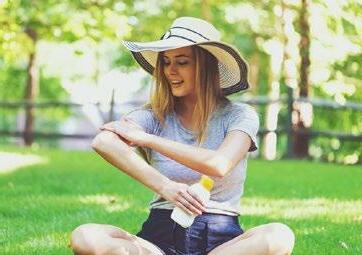
Postpartum wellness is essential for all mums, and this can be a time to form new habits and rituals to take with you on a lifelong journey. A baby relies on their mother so much in those first few months, and it is an incredibly special time of bonding as a parent and as a family. This profound transition can create an opportunity to reconsider and promote your own wellbeing, just when you may need it most. Because, as a new mother, you need just as much nurturing as your new baby.
Self-care is taking the time to support yourself holistically. This can be in a physical, psychological or social way, depending on the needs of your mind and your body.
Self-care can allow you to take a breather and connect with how you feel and what you need. It may help you to feel more energetic, patient and present. And when life becomes overwhelming and chaotic, as it can be in those early days, self-care gives you the tools and strength to help you through.
Self-care isn’t selfish, nor is it a luxury. It is a fundamental component of our health and wellbeing, and it shouldn’t be left behind after you have had a baby. You don’t need to selfsacrifice. You can have time with your baby and time for yourself. Sometimes, self-care may be in small snippets or bursts, but as time passes and your child changes and you evolve as a mother, your self-care regime will adapt too.
When deciding what kind of self-care will be best for you, think about what is important to you, what you love and what makes you feel empowered and recentred. There is no doubt motherhood is hard. It can challenge us; it can be emotional and often in the midst of sleep deprivation and exhaustion, we can feel fragile, covered in a cloud of fog. What I didn’t realise during these first days and weeks was that I was becoming more resilient and stronger than I ever thought was possible. I hope this book will help you to create your own self-care rituals, to support you in early parenthood and beyond. Welcome to motherhood and to your self-care guidebook.
During my first year of motherhood, finding even small moments of self-care felt impossible. I didn’t have a ‘village’ to help me fill up my cup after those long days and sleepless nights.
Once my second child came along, I realised that to be the best mother, partner, daughter and friend I wanted to be, I needed to make some changes. This included making time to nurture myself and do the things that I enjoyed.
I knew that research shows that a mother’s wellness and emotional health can correlate with and affect the baby’s wellbeing. If I didn’t feel I could prioritise self-care for my own sake, I had to do it for my child.
Nothing was more important than my health and my family, so I set out to find a way to reclaim those little things that had dissipated from my life. It was like rediscovering who I
“Self-care isn’t selfish, nor is it a luxury.”
was all over again. As I got better at making the time for self-care, even if it was just 15 minutes a day, I soon felt less guilty and far more resilient.
Part of my self-care journey included redefining success in motherhood, and finding a way to let go of the unrealistic expectations I had placed on myself, and the guilt that came with inevitable failure.
I realised that the more I practised my role as a mother, the more I grew, and the stronger I became. These past five years have been the hardest, most transformative years of my life – and my best yet.
Yes, I am a mum. But I am also so much more.
The mental load of motherhood is the invisible work, intangible tasks and everyday duties that we carry on our shoulders.
You are not alone. All mothers will share this experience at some point in their parenting journey. This load will inevitably wear us down if we don’t make the space and time to pause and enjoy moments of solitude, as well as togetherness as a family.
a lot to juggle. Some days it can feel allencompassing.
When you’re feeling overwhelmed by the mental load, remind yourself of the times you feel full of hope and excitement for the future and all you have achieved, even in exhaustion! We tend to be hard on ourselves and not give ourselves credit when it is deserved. Remember the joy and laughter that still flourishes in the chaos, and the beauty of creating a family and watching your children grow.
Most importantly, take intentional time to offer yourself care in any way you can. This will help you to acknowledge and reduce your mental load – and also find ways to redistribute it.
This is an edited extract from Self-Care for New Mums by Ruby Matley, published by Macmillan Australia, RRP $29.99.

Many women find first-time parenting both rewarding and challenging, joyful and exhausting. In this warm, wise and practical guide, author and podcaster Ruby Matley shares expert words of advice, simple strategies for tough times and a host of ideas for women seeking out moments of self-care every day.
As parents, we are presented with daily challenges, from home maintenance, financial responsibilities and meal planning to managing our career, our intimate relationship and our extended family. It is
Whether it’s enjoying a favourite meal, taking a guilt-free nap, connecting with friends or sharing the mental load, these rituals and recipes will help you to unwind, recharge and be present for this special time.
“It’s time to acknowledge, reduce and share the mental load”

It is estimated that up to 8-13% of women suffer from polycystic ovarian syndrome (PCOS) and although a specific cause has not been identified, four out of every five women suffer from insulin resistance. Women may be prescribed the oral contraceptive pill to regulate their cycle, however, that suppresses ovulation and often worsens insulin resistance. Natural fertility specialist Aviva Romm claims that “if a patient falls into the categories of being overweight or obese, this therapy (oral contraceptive pill) is relatively contraindicated”.

Nikki Warren, fertility naturopath and founder of NaturoBest, experienced this herself. A battle with polycystic ovarian syndrome, and then an unpleasant experience with morning sickness, fuelled Nikki’s passion towards naturopathy and then on to designing her own prenatal supplement range. Nikki tells us more…
My journey began after commencing the contraceptive pill when I was 27. I started piling on the weight and acne appeared on my chin. As a result, I decided to come off it a couple of months later. After coming off the pill, my period didn’t return, I continued to

rapidly gain weight to a total of 10 kilograms, and the acne on my chin only compounded the damage to my self-esteem. Over the next 12 months my period still hadn’t returned and I saw specialist after specialist before turning to complementary medicine. I saw a homeopath, an acupuncturist and finally a naturopath. I was feeling pretty despondent by that time. The naturopath formulated a liquid herbal mixture for me and within three weeks my period returned, the acne started to clear and over the next few months I lost several kilograms.
I could not believe the outstanding results, it inspired me to study naturopathy myself.
That year, while studying and working full time as a flight attendant, I conceived my daughter. In hindsight, my unplanned pregnancy was probably the best thing that could’ve happened to me. Being a single mum was tough, but the fast-paced lifestyle I led as a flight attendant prior to my pregnancy, was certainly not good for my health.
Working night shifts on long-haul flights in early pregnancy was a struggle in itself, let alone dealing with morning sickness. I spent many days in hotel rooms hovering over the toilet bowl and none of the natural remedies I tried seemed to help.
Nine years later I was married and ready to prepare for my second pregnancy. By this time I had studied for six years and earned a Diploma in Naturopathy, an Advanced Diploma in Herbal Medicine and a Bachelor of Health Science. As part of the degree course, I undertook extensive research into morning sickness and discovered some insights I had never heard of in my five years of working as a fertility naturopath.
With this pregnancy, my husband and I followed a preconception care plan and I fell pregnant with my second child straight away. I designed and had made by a compounding pharmacist, a prenatal vitamin that also reduced morning sickness. It worked so well for me and subsequently my clients, that I knew I had to take it to the market.
• Eat a diet with plenty of protein and good fats and low in carbohydrates.
• Eat organically as much as possible, especially meat, dairy, fruit and vegetables.
• Avoid plastic. Drink from a glass or glass water bottle and avoid plastic wrap and containers.
• Drink 2-3 litres of filtered water daily.
• Eliminate soft drinks and other sugary foods such as lollies and biscuits.
• Add cinnamon to smoothies or protein shakes to help stabilise blood sugar.
• Reduce alcohol to an occasional treat or better still, eliminate altogether.
Sometimes a woman may suffer from irregular periods for reasons other than PCOS and this can be extremely distressing to her, especially if she is trying to conceive. The herbs contained in our Cycle & Skin Support are not specific to PCOS and may be used by any woman suffering from an irregular cycle. As a fertility naturopath, I’ve helped thousands of couples, over more than a decade in clinical practice, realise their dream of a baby.

My top advice: If a brand is selling tablets rather than capsules you know they are putting profit margins ahead of quality. Tablets are cheap to manufacture and contain a lot of excipients including colourings in the film coating. We have chosen vegan-friendly capsules and all our formulas are low in excipients. This makes it more expensive to manufacture but as somebody who suffers from allergies myself, I wanted to make sure the NaturoBest range was as free of nasties and allergens as possible.
• Quit drinking coffee and switch to tea instead.
• Drink herbal teas instead of caffeinated drinks. Try licorice tea or spearmint tea –both are yummy and beneficial for PCOS.
• Learn all you can about eating low GI foods and lowering the glycaemic index of your meal by food combining.
• Take a high-quality multivitamin such as NaturoBest’s Preconception Multi for Women along with a calcium and magnesium supplement.
• Have blood tests every three months with a fertility naturopath, herbalist, or nutritionist to monitor your progress.
Nikki Warren is a degree qualified Naturopath and Medical Herbalist and the founder of NaturoBest, a prenatal and preconception supplement range that changes as your requirements evolve according to your trimester. naturobest.com
“My aim was to help as many other women as possible on a much larger scale than I could in my clinic, so NaturoBest was born.”


Two of Australia’s favourite showbiz personalities, comedian Stephen Curry and actor Michala Banas, have united to raise awareness for kidney health disease – and their crusade is deeply personal.
Michala and Stephen have developed a series of light-hearted but important video messages promoting kidney health to encourage Aussies to put on their red socks and sign up for the Red Sock Run this October to combat kidney disease.

Michala almost lost her life when she was six years old with a serious illness that required surgery to remove most of her left kidney in a life-saving operation. She was born with a duplicated ureter (the tube from the kidney to the bladder) that wasn’t discovered until her body had almost been fatally poisoned.
“The doctors couldn’t work out what was wrong with me, but my parents sought a second opinion, and it turned out a scan revealed my kidney condition. I was rushed into emergency surgery straight away,” Michala explained.
“But I am one of the lucky ones, and I am so grateful for it. I am hyper-vigilant about my body now and my kidney.
Kidney disease is a silent killer. A person can lose up to 90 per cent of kidney function before any symptoms are apparent. It is so important to ask your GP for an annual kidney health check because you never know.”
Stephen Curry’s great friend, Lesley, suffers from kidney failure. Diagnosed with Goodpasture Syndrome at 29, the mother of one now has end stage renal disease with one per cent kidney function. She is strapped to a dialysis machine three days a week to keep her alive while she awaits a transplant – and she has been waiting for 11 years.
Stephen is determined to share her story to raise awareness and encourage people to be part of the Red Socks Run, to support people like Lesley living with kidney disease.
“Raising awareness for kidney disease is so close to my heart, as Lesley is like family,” Stephen said.
Michala and Stephen came up with the idea of developing a series of videos to raise awareness about kidney disease and inspire Australians to run, walk or ride like a life depends on it.
The Red Socks Run begins on October 1 and you can sign up now for the free challenge to run, walk or ride 60km over the month of October to combat kidney disease.
Participants can do the Red Socks Run in their own time and at their own pace. Sign up as an individual or as part of a team. They’ll be supporting the life of someone living with this debilitating and deadly disease.

Kidney Health Australia is determined to prevent more people reaching kidney failure and enduring a lifetime on dialysis. With 1.5 million Australians unaware they have the early signs of the disease, the Red Socks Run also aims to raise vital awareness.
On average, 63 people in Australia will die every day with kidney-related disease, and there is no cure for it.
The Red Socks Run helps to fund life-changing treatments and vital support services for those living with the disease.
To find out more and sign up for the Kidney Health Red Socks Run, visit redsocksrun.org.au.